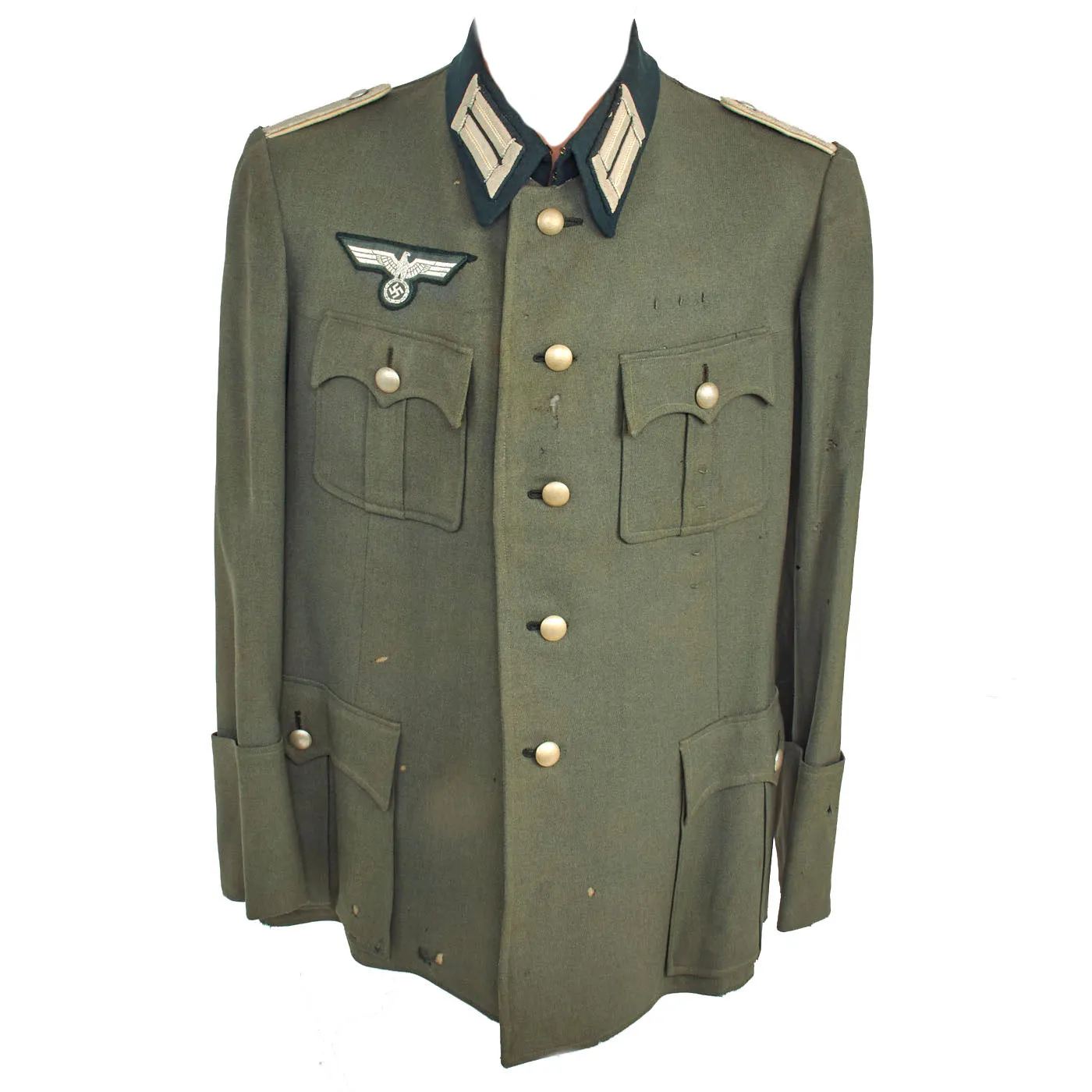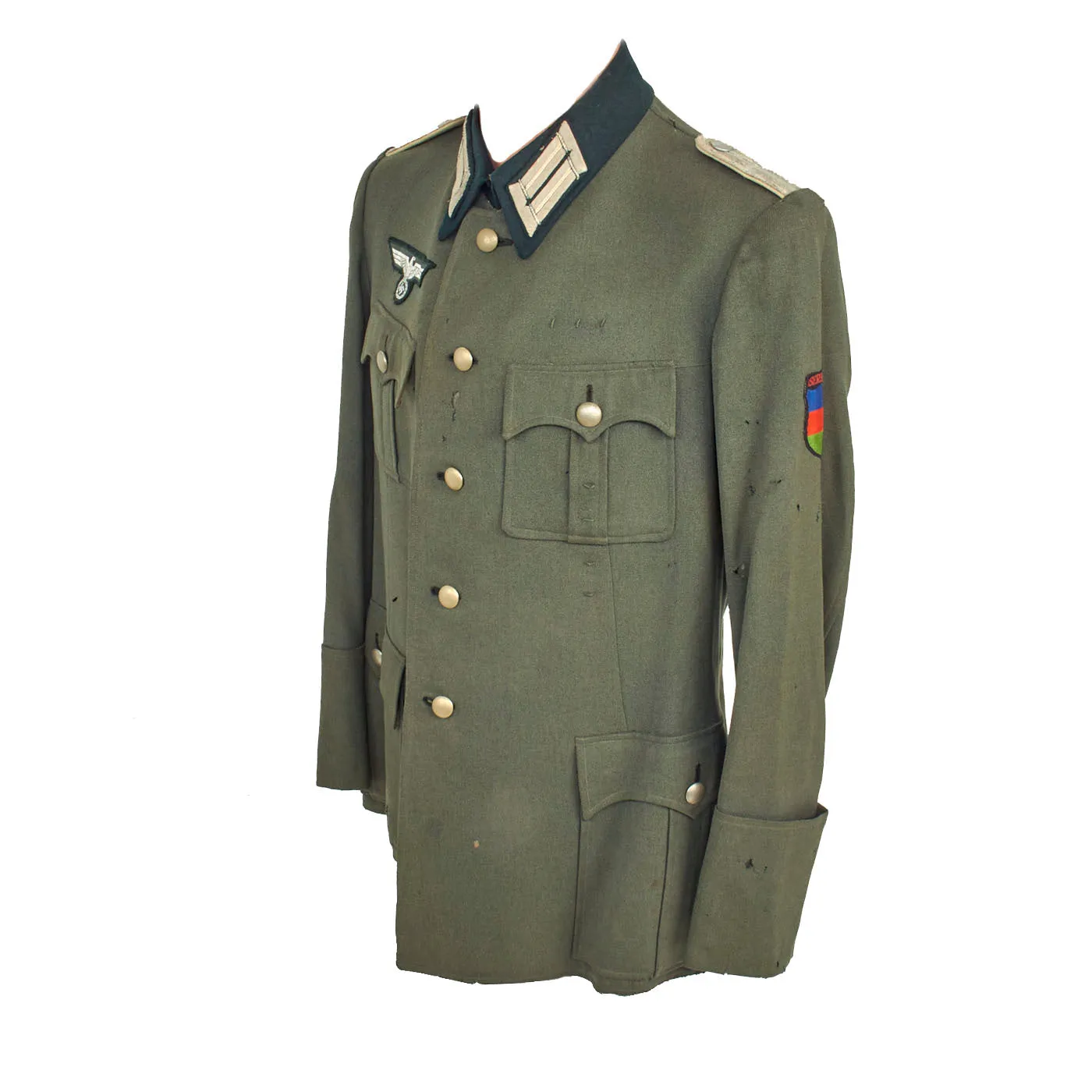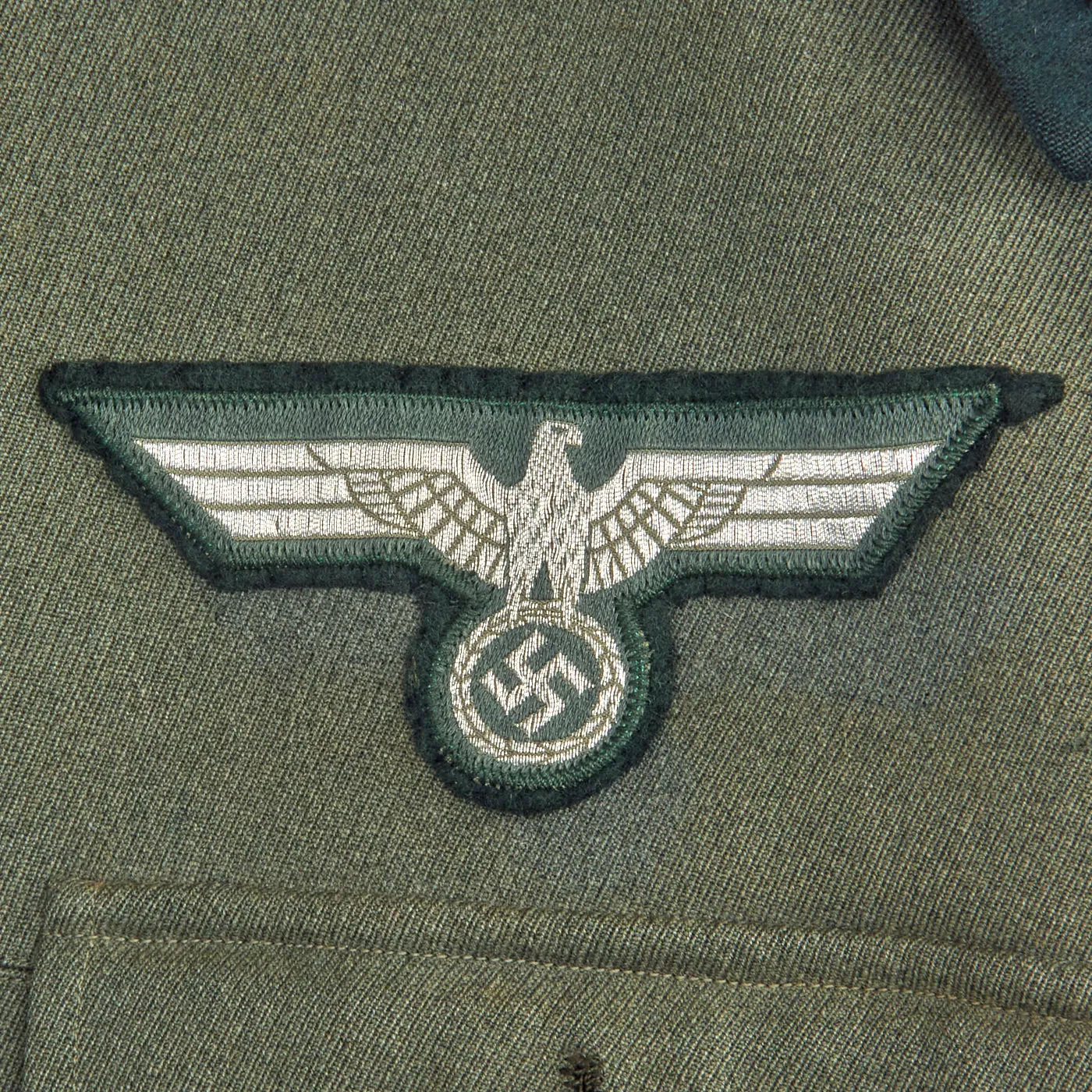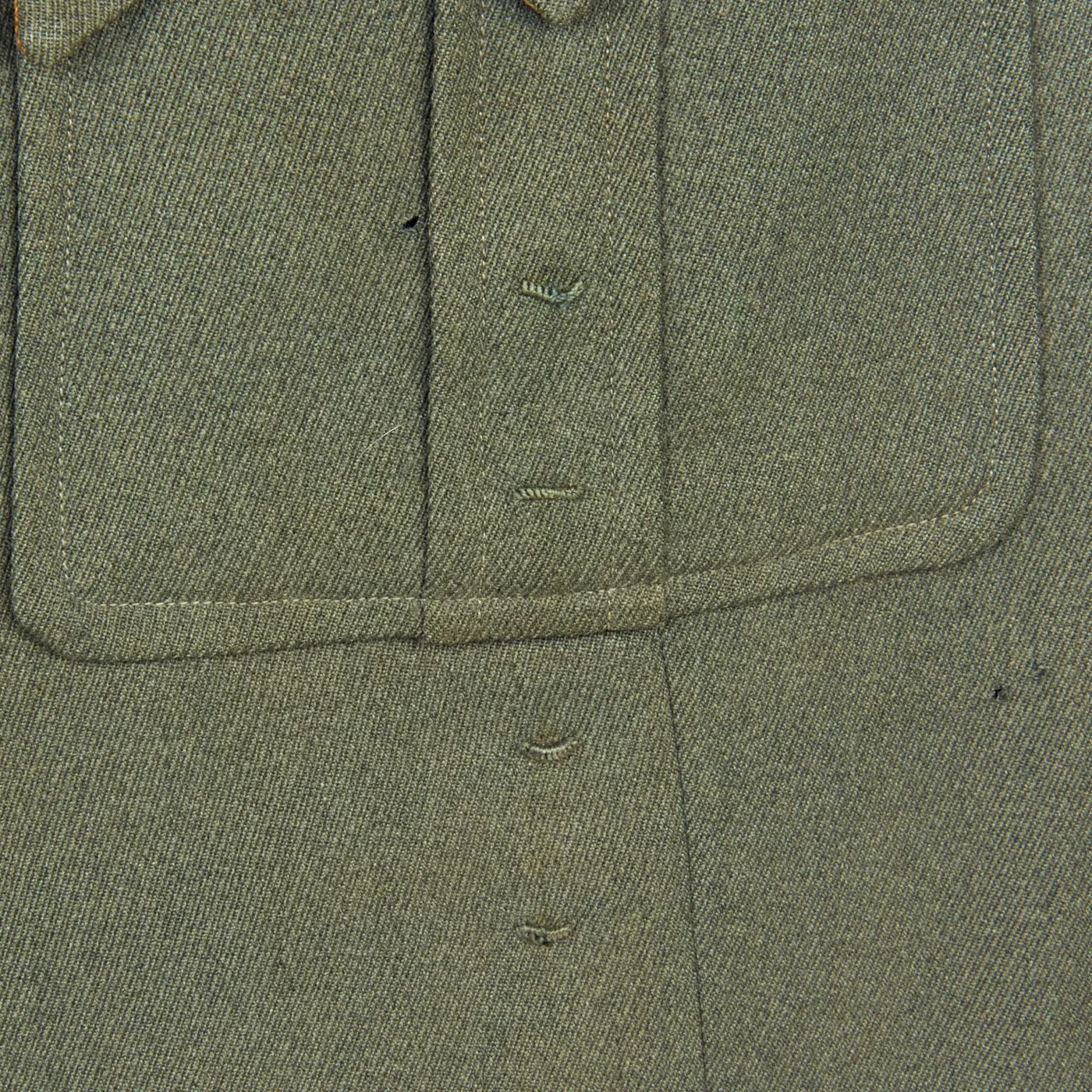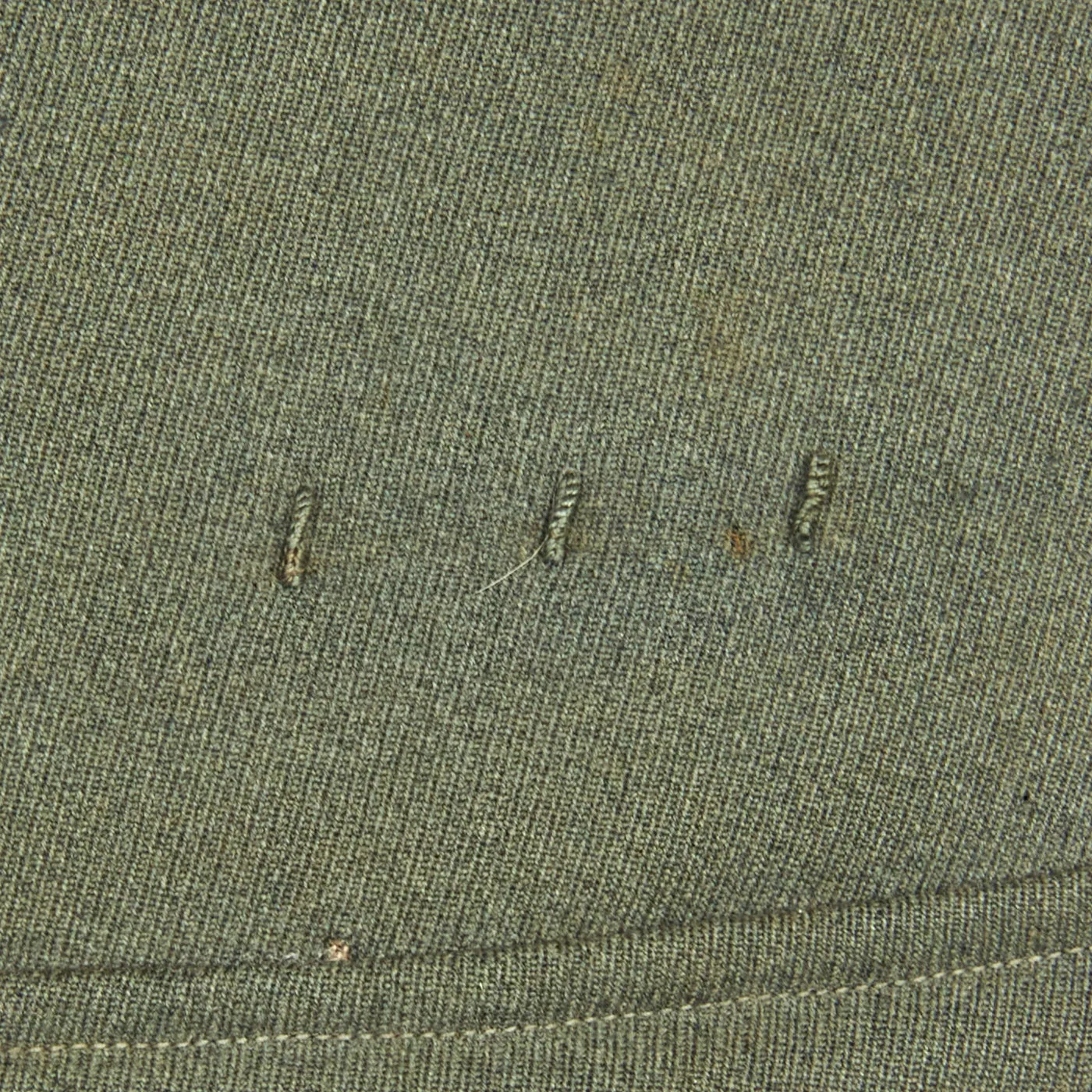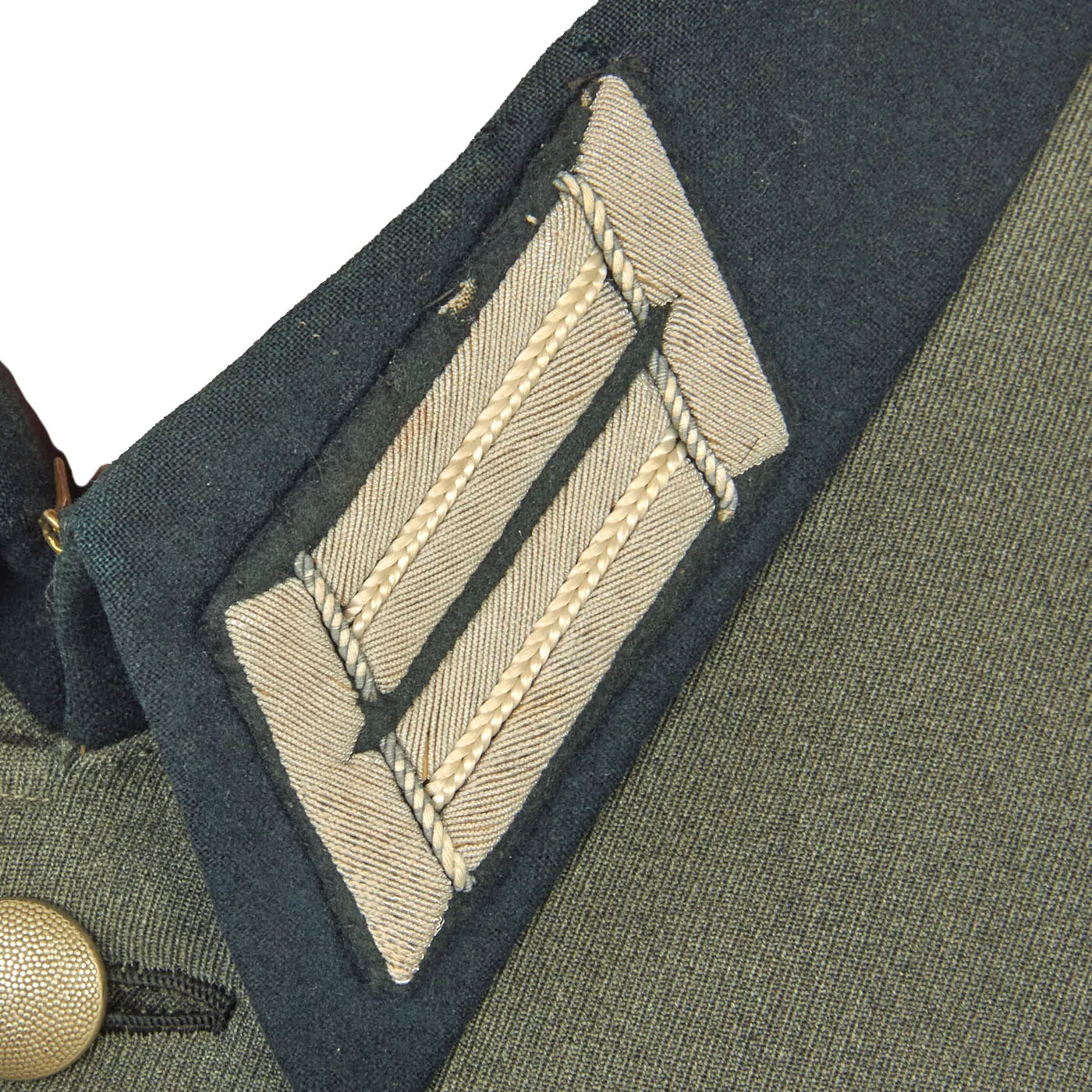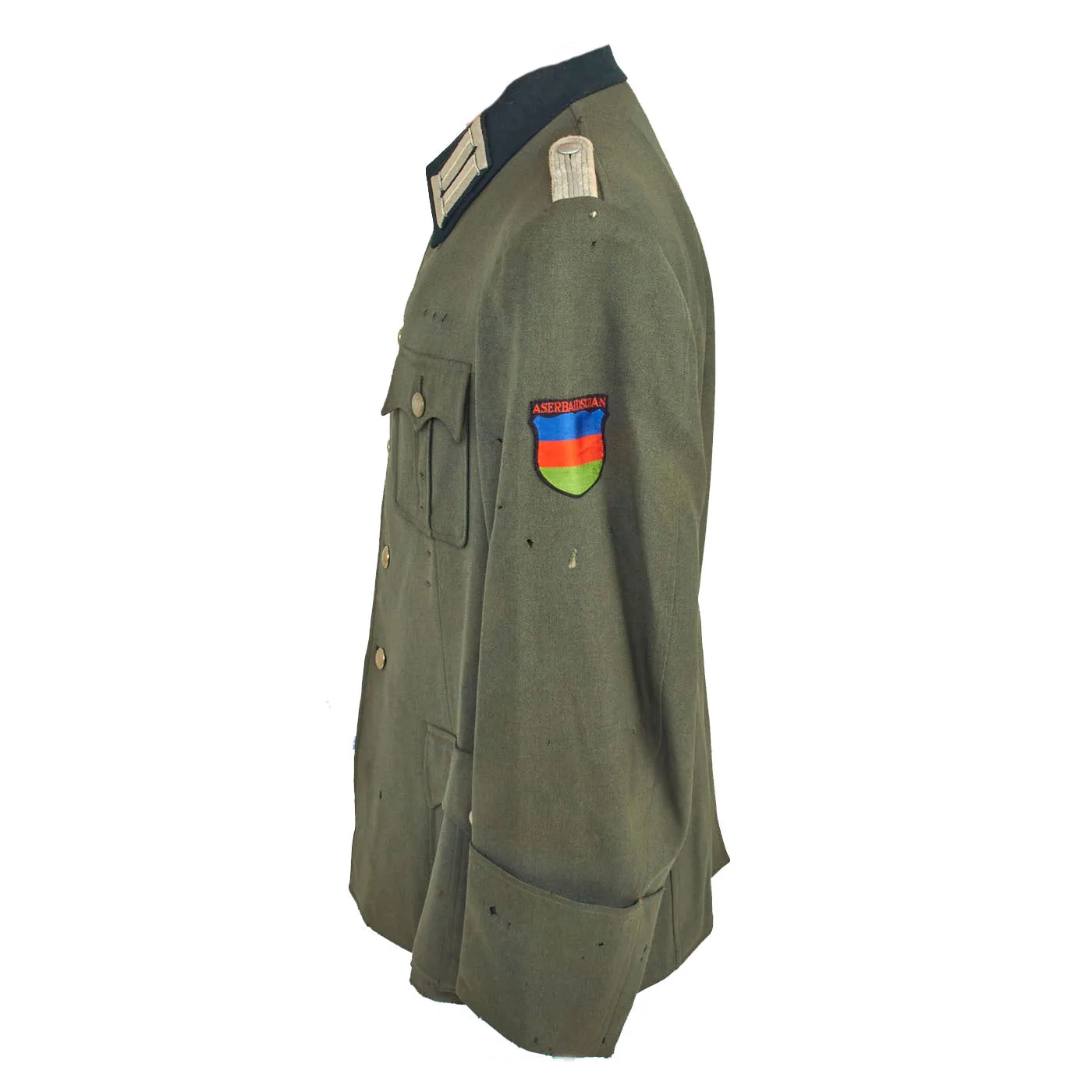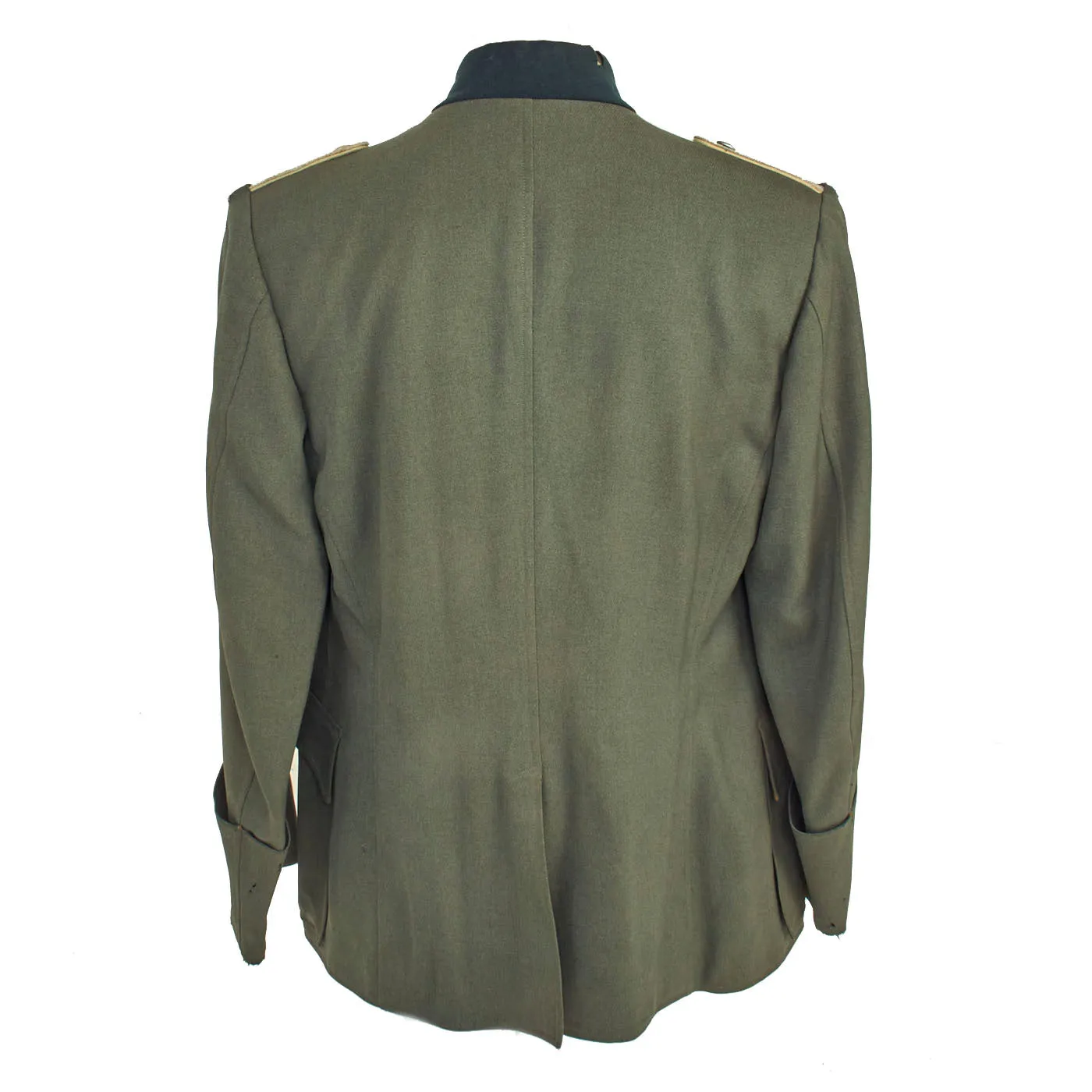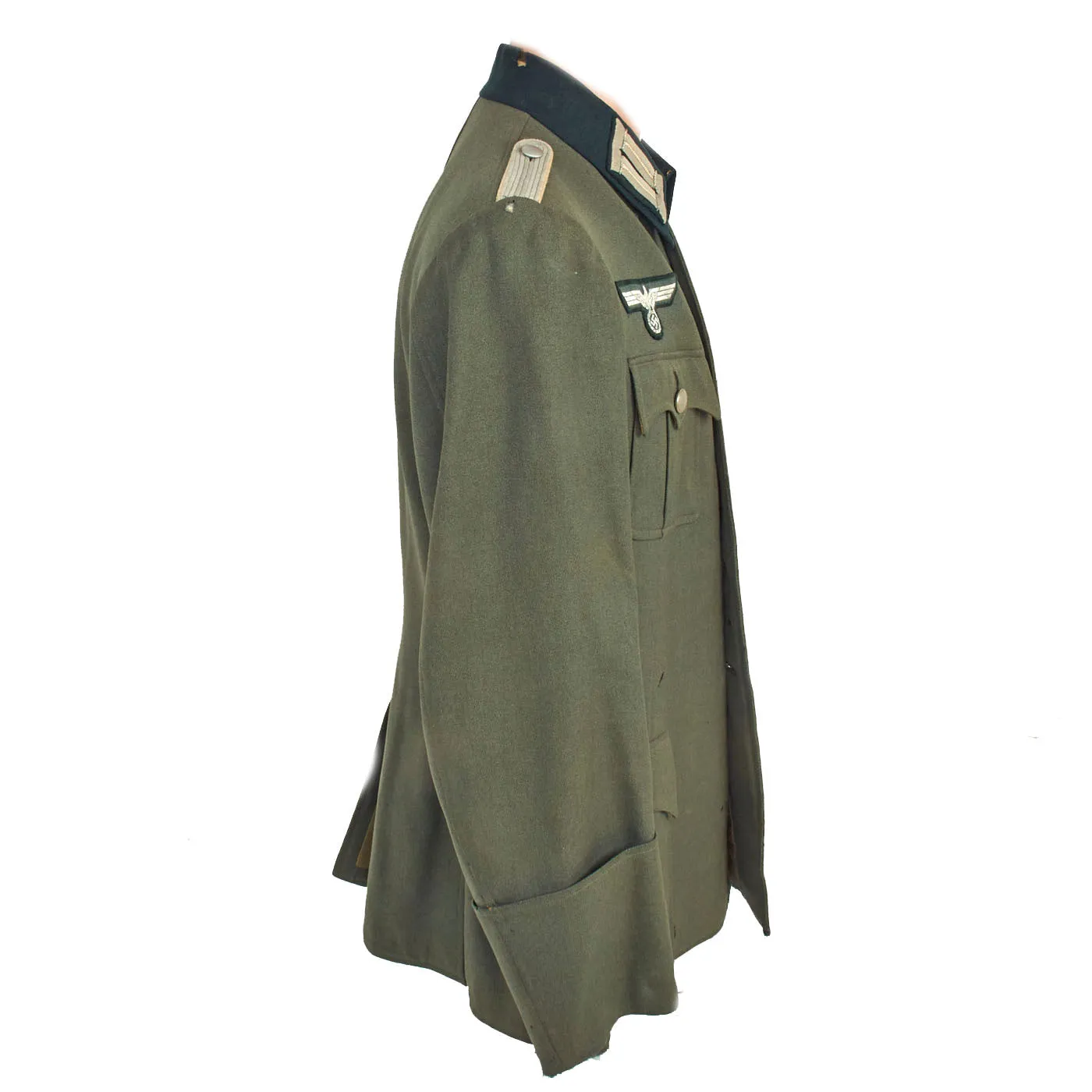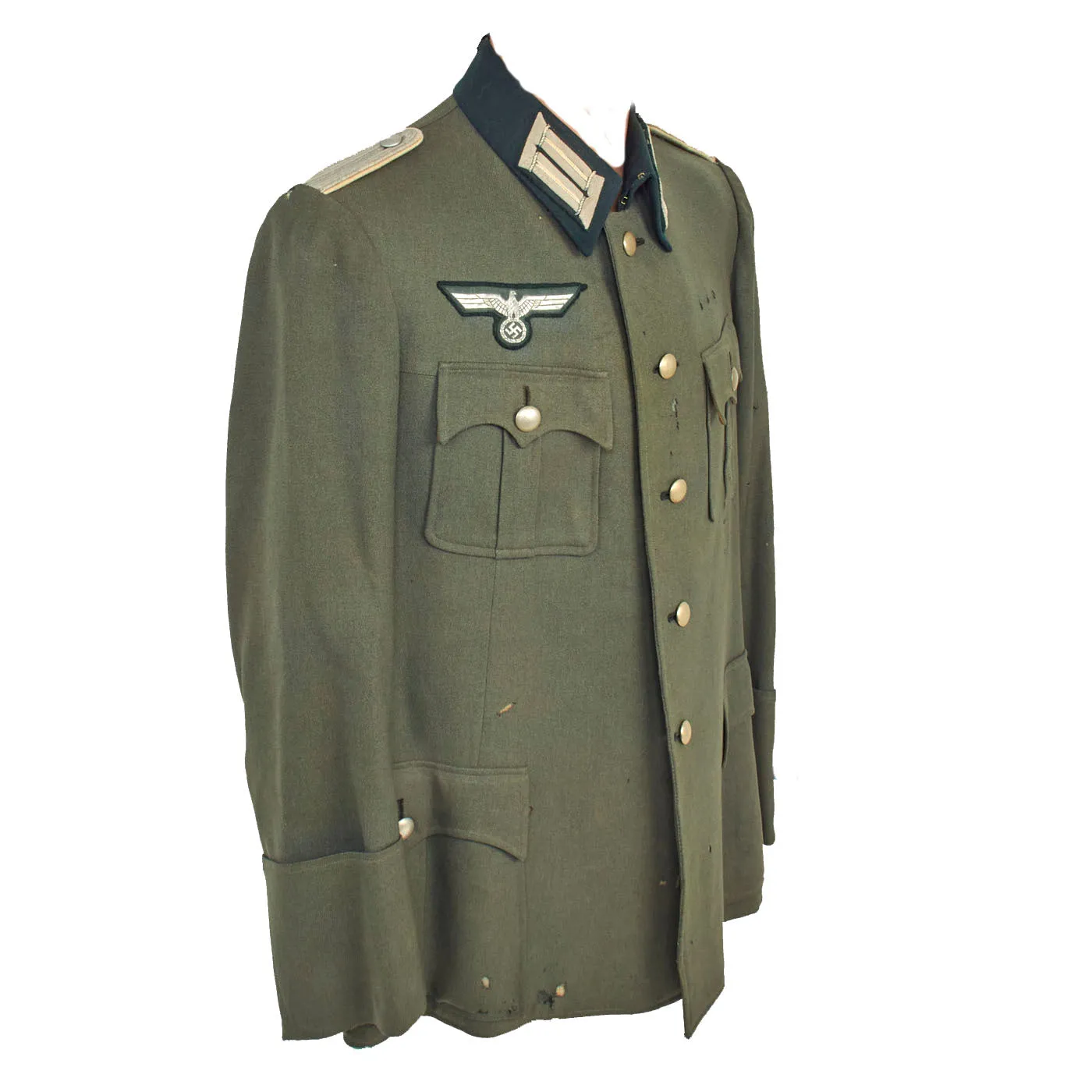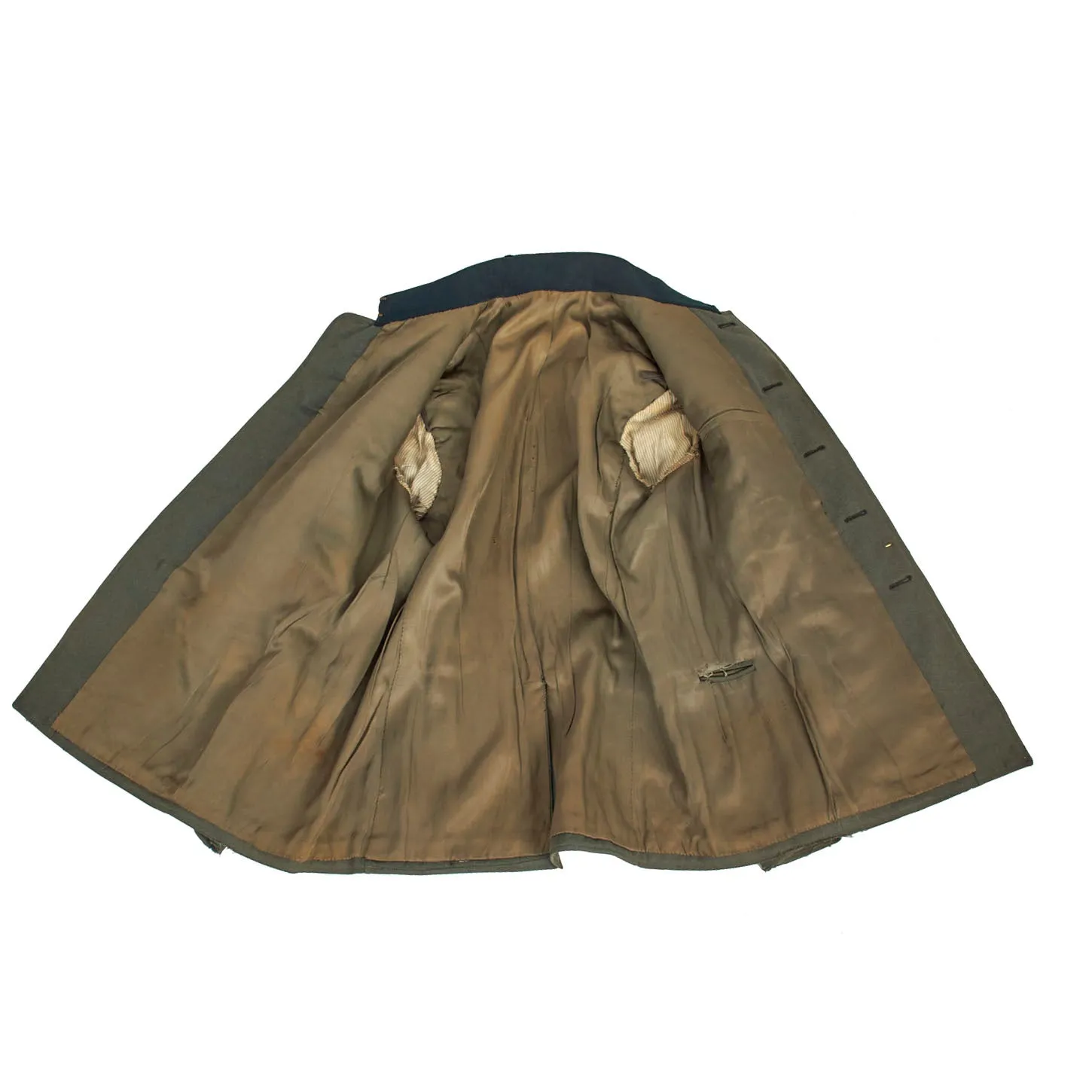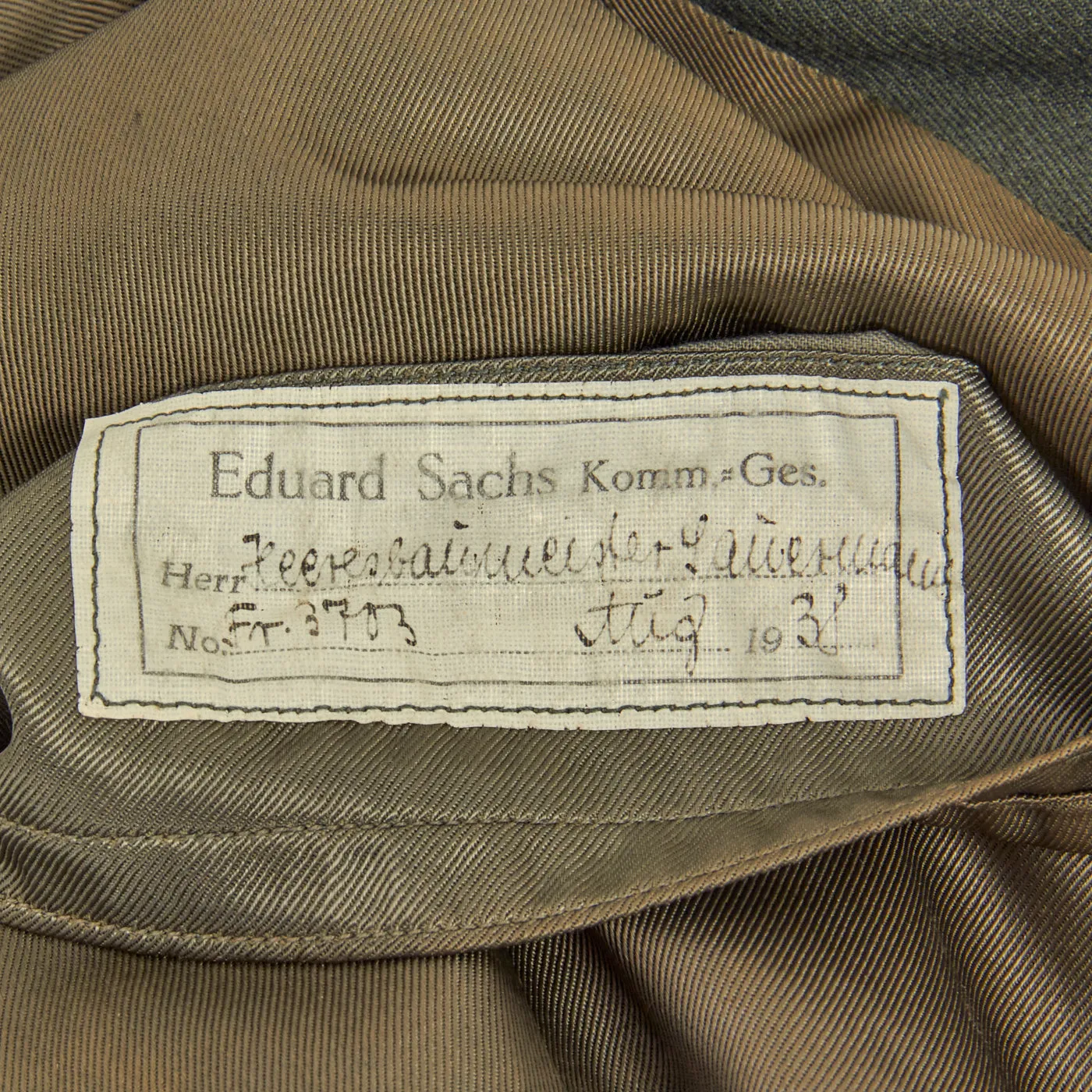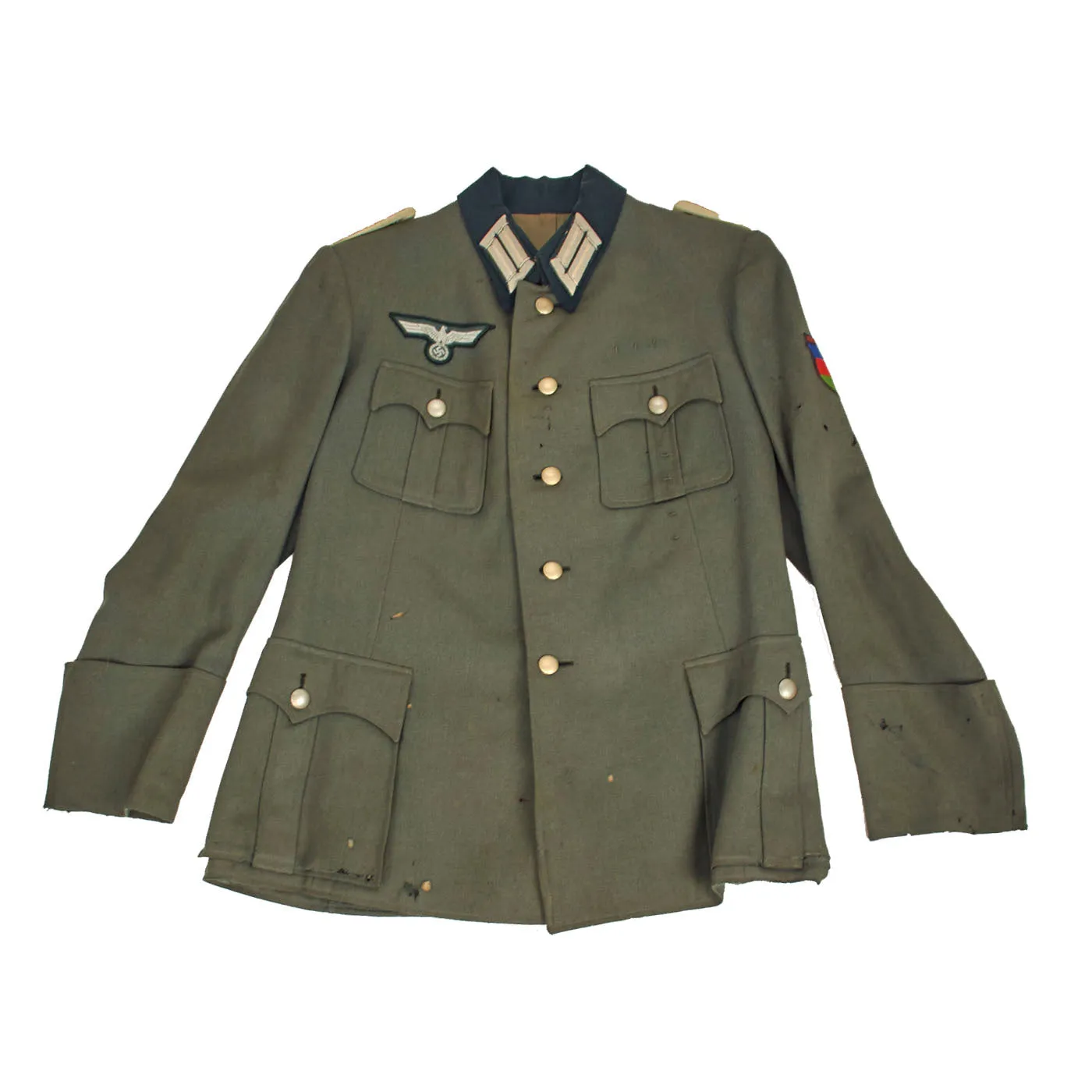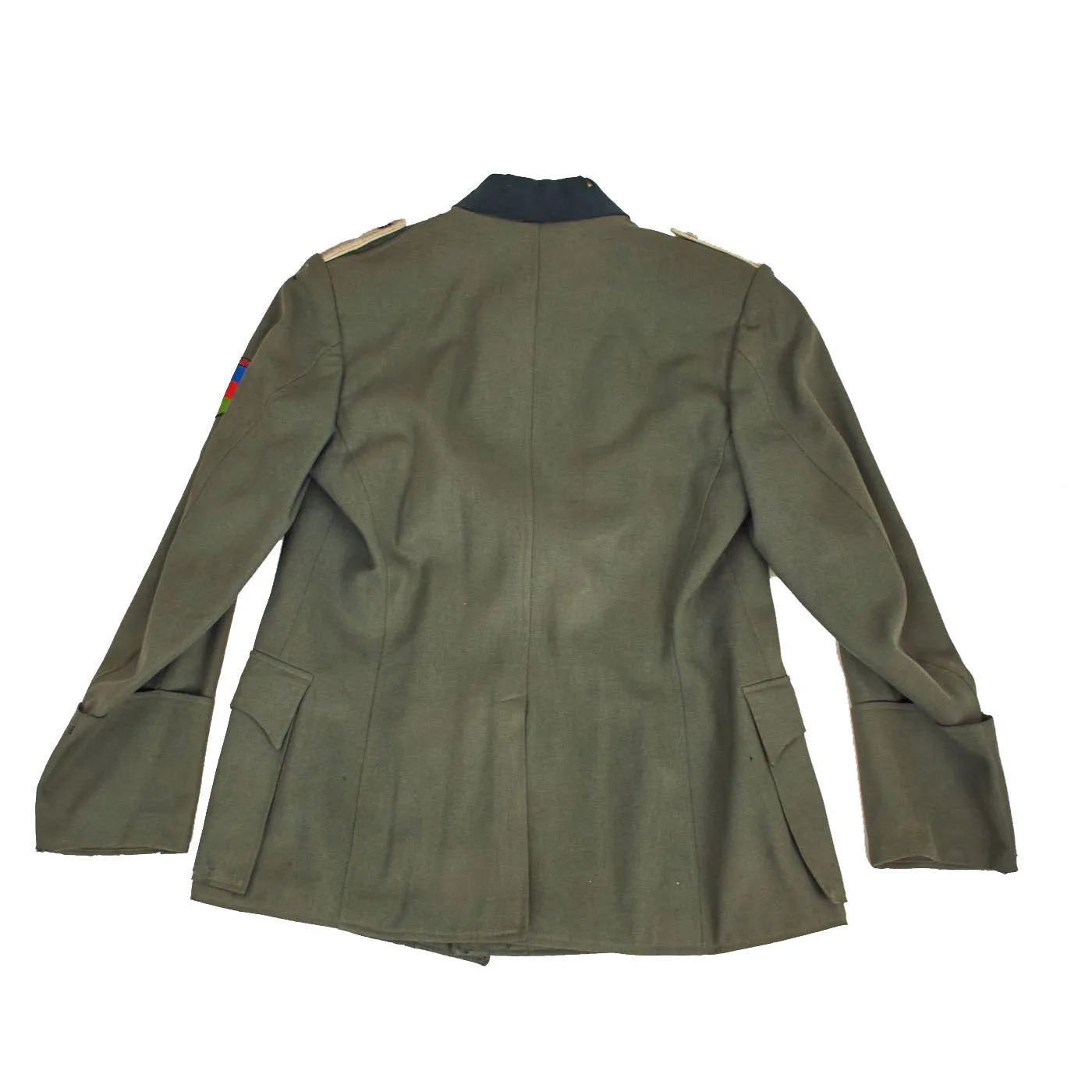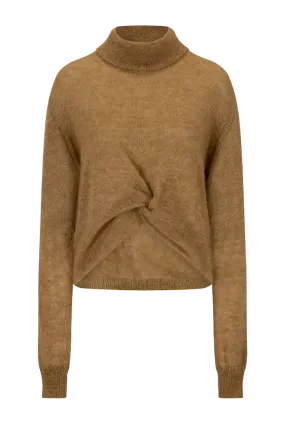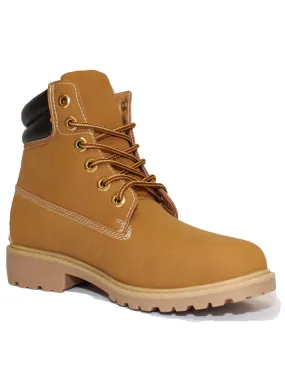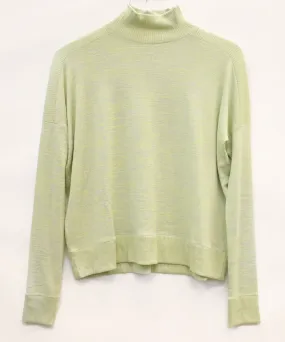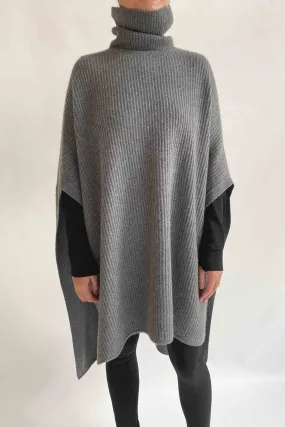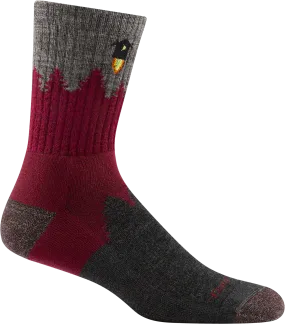Original Item: Only One Available. This is a nice worn early pattern German WWII Heer Army M-36 Tunic, which shows fairly extensive wear and degradation from long service. It shows signs of alteration, especially on the inside of the cuffs, and there are some large holes on the exterior shell, which look to possibly be from mothing or wear. The most noticeable of these is on the upper right shoulder next to the collar on the front side, where the inner fabric has been worn through as well. This is definitely a uniform with some real history!
There is not a maker label under the collar, but there is one in the pocket, indicating it was made by Eduard Sachs Komm=Ges. in 1939. There also looks to be a name, but it also could be a title or the name of the Heer clothing office. The tunic features four pockets with scalloped flaps and pebbled aluminum buttons, and has a five button front closure, with two "hook and loop" fasteners for the collar. The buttons are sewn directly to the fabric, and all appear to be maker marked and original. It is adorned with the usual rank and branch insignia used on German tunics. The attractive Army breast eagle is the correct officer's silver bullion BeVo machine embroidered type on a green background, and is very neatly hand stitched to the chest in a fashion typical of wartime German tailor work. The stitching does not go through to the inside, so it is original to the tunic.
The collar is wrapped in a dark-green wool, has officer's field litzen collar patches on each side, which are woven from silver bullion thread with a dark green background matching the collar. The colored stripes on each are Weiß (white), the Waffenfarbe (corps color) for infantry and motorized infantry. The collar is in good shape, tough there definitely is some wear around the edges, which is usually one of the first places to show damage from use. There is a hole in the back of the color where the fabric has completely worn through. There are also scattered holes and tears throughout the tunic.
The “sew-in” style company officers schulterklappen (shoulder boards) of this tunic are constructed with two rows of fine silver flatware "Russia Braid" double piping and have the correct white piping around the edges. There are no rank "pips" installed, indicating the junior officer rank of Leutnant, equivalent to a U.S. Army 2nd Lieutenant. The shoulder straps definiteliy show wear, with the silver coating on the braids having worn away. There are some thread loops on the left breast and left pocket where medals were once displayed.
Interestingly, left sleeve of this uniform has an ASERBAIDSCHAN shield-shaped sleeve patch, for the Azerbaijani (Aserbaidschanische) Legion. This was one of the foreign units of the Wehrmacht assembled on the Eastern Front. It was formed in December 1941 on the as the Kaukasische-Mohammedanische Legion and was redesignated 1942 into two separate legions, the North Caucasian legion and the Azerbaijani legion. It was made up mainly of former Azerbaijani POW volunteers but also volunteers from other peoples in the area. It was part of the Ostlegionen. It was used to form the 162nd (Turkistan) Infanterie-Division of the Wehrmacht in 1943. Many Azerbaijanis joined here in hopes of liberating their homeland from Soviet rule. The patch on this uniform would suggest that it was a used uniform that was being discarded, and was then sent to the unit to use.
A very interesting German WWII Infantry Officer tunic with some great period wear. Ready to research and display!
Approximate Measurements:
Collar to shoulder: 9”
Shoulder to sleeve: 24”
Shoulder to shoulder: 17”
Chest width: 18”
Waist width: 20”
Hip width: 23”
Front length: 31"
The Azerbaijani (Aserbaidschanische) Legion was one of the foreign units of the Wehrmacht. It was formed in December 1941 on the Eastern Front as the Kaukasische-Mohammedanische Legion and was redesignated 1942 into two separate legions, the North Caucasian legion and the Azerbaijani legion. It was made up mainly of former Azerbaijani POW volunteers but also volunteers from other peoples in the area. It was part of the Ostlegionen. It was used to form the 162nd (Turkistan) Infanterie-Division of the Wehrmacht in 1943. Many Azerbaijanis joined here in hopes of liberating their homeland from Soviet rule.
More on German WW2 Uniform Tunics:
Terms such as M40 and M43 were never designated by the Wehrmacht, but are names given to the different versions of the Model 1936 field tunic by modern collectors, to discern between variations, as the M36 was steadily simplified and tweaked due to production time problems and combat experience.
Field Tunic (Feldbluse) Model 1936
When the NSDAP came to power in early 1933 the Reichswehr, the armed forces of the Weimar Republic, were near the end of a two-year project to redesign the Army Feldbluse (field-blouse). Beginning in that year the new tunic was issued to the Reichsheer and then the rapidly growing Wehrmacht Heer, although minor design changes continued to be made until the appearance of the standardized Heeres Dienstanzug Modell 1936. The M36 tunic still retained the traditional Imperial and Reichswehr uniform color of grey-green "field gray" (feldgrau) wool, but incorporated four front patch pockets with scalloped flaps and pleats (on Reichswehr tunics the lower pockets were internal and angled). The front was closed with five buttons rather than the previous eight, and the collar and shoulder straps were of a dark bottle-green instead of the Reichswehr grey. Compared to the Weimar-era uniforms the skirt of the feldbluse was shorter and the tailoring was more form-fitting due to Germany's adoption of mechanized warfare: soldiers now spent much time in the confined space of a vehicle and a shorter jacket was less likely to pick up dirt from the seats. It also included an internal suspension system, whereby a soldier could hang an equipment belt on a series of hooks outside of the tunic. These hooks were connected to two straps inside the lining, which spread the weight of equipment without having to use external equipment suspenders. The M36 was produced and issued until the very end of the war, though successive patterns became predominant.
SS field uniforms were of similar appearance externally but to fit their larger patches had a wider, feldgrau collar, and the lower pockets were of an angled slash type similar to the black or grey SS service-dress. The second button of an SS Feldbluse was positioned somewhat lower, so that it could be worn open-collar with a necktie. Due to supply problems the SS were often issued army uniforms.




